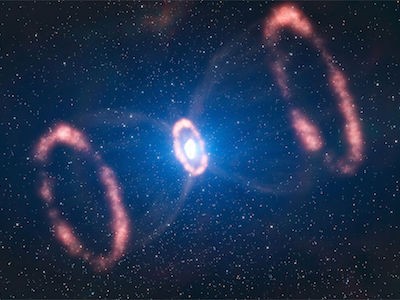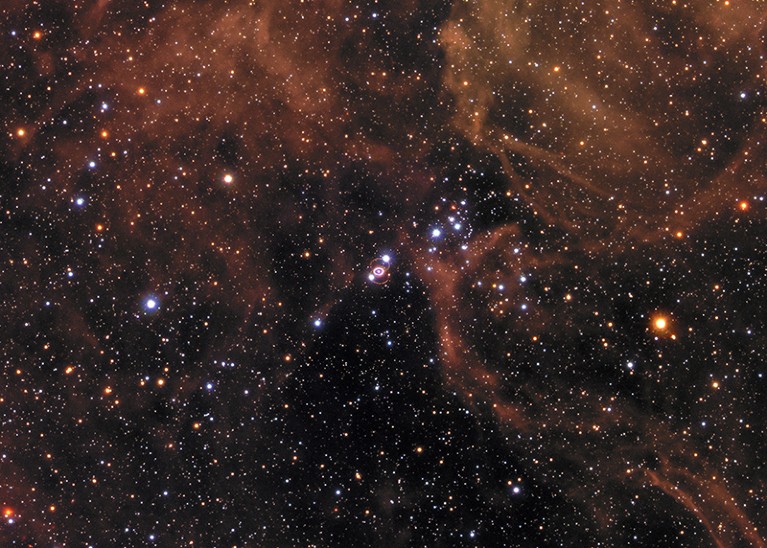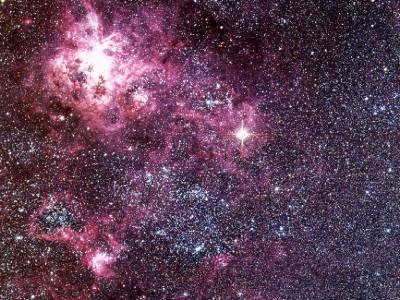The James Webb Space Telescope (JWST) has solved a decades-old mystery about one of the most famous explosions of a star in history.
Astronomers used the observatory to finally spot signs of an ultradense ‘neutron star’ lurking in the explosion’s core in a galaxy that orbits the Milky Way. Light from the explosion reached Earth 37 years ago this week, in a supernova that revolutionized modern astrophysics by providing an up-close look at how stars die.

How to blow up a star
But despite years of studying this blast, known as supernova (SN) 1987A, astronomers had not been able to detect what was left behind: maybe a black hole, which can sometimes be formed, or perhaps a neutron star, as many predicted?
“It’s something that’s been searched for ever since the explosion,” says Patrick Kavanagh, an astrophysicist at Maynooth University in Ireland, and a member of the team reporting the discovery today in Science1. “And now we’ve found it.”
JWST did not observe the neutron star directly, because it remains obscured behind a veil of dust from the explosion. But the telescope detected light coming from argon and sulfur atoms that had been ionized, or electrically charged, by radiation blazing from the long-sought neutron star.
“This is a very plausible case for seeing the effects of the neutron star we all expected,” says Robert Kirshner, an astronomer and executive director of the TMT International Observatory in Pasadena, California, who has studied the supernova for decades. “There have been hints and allegations [before], but nothing as direct as this.”
An ‘elusive nugget’
Table of Contents
The supernova astonished scientists when it appeared in February 1987 in the Large Magellanic Cloud galaxy, which is around 50,000 parsecs (160,000 light years) from Earth. The first sign that something had happened was a wave of the ghostly particles known as neutrinos, which washed over Earth and triggered neutrino detectors around the world. Within hours, a ‘new’ star blazed bright enough to be visible to the naked eye. It was the closest and brightest supernova observed since 1604, at the dawn of the age of the telescope.
Over the years, astronomers watched as rings of gas and dust expanded outwards from the site of the explosion, usually growing dimmer but sometimes brightening when various ejected materials collided. The world’s most powerful telescopes — including JWST’s predecessor, the Hubble Space Telescope — tracked the evolution of the explosion. Studies of SN 1987A ultimately led to many discoveries about stellar evolution, such as how dying stars expel the chemical elements forged in their hearts into space.

Supernova 1987A (at centre of image) is located in the Large Magellanic Cloud, a neighbouring galaxy.Credit: NASA, ESA, Robert P. Kirshner (CfA, Moore Foundation), Max Mutchler (STScI), Roberto Avila (STScI)
But nobody had ever been able to spot the ember that was left behind — an “elusive nugget”, Kirshner calls it — when the original star blew up. Theory suggests that the original star exploded in the most common type of supernova, in which a large star (one that’s at least eight times the mass of the Sun) runs out of hydrogen, helium and other elements to sustain its nuclear fusion, and thus collapses and explodes.
One outcome of such a supernova is to leave behind a black hole. But early observations of SN 1987A, such as the wave of neutrinos, suggested that it should have given rise to a neutron star, which can be just 20 kilometres across but is so dense that a teaspoonful weighs millions of tonnes. Astronomers have found several tantalizing hints of this outcome using other telescopes, but none have yielded a solid conclusion, meaning that other possibilities were still on the table2,3.
Enter JWST, which launched in late 2021 and can observe celestial bodies at different wavelengths and higher resolution than can many other telescopes. In July 2022, in some of its first scientific observations, the powerful space telescope observed SN 1987A for nine hours. Two of its cutting-edge instruments provided unprecedented insights into what was happening at the heart of the exploded star. “The data were really superb quality, much better than I had imagined,” says team member Josefin Larsson, an astrophysicist at the KTH Royal Institute of Technology in Stockholm.
The strongest evidence so far
The JWST observations revealed the fingerprint of ionized argon and sulfur gas triggered by the central neutron star. The finding is “the strongest observational evidence so far” for the presence of a neutron star in SN 1987A, says Mikako Matsuura, an astrophysicist at Cardiff University, UK. She won’t go so far as to call it conclusive, but says that “JWST is really an amazing telescope to deliver such a discovery”.

A supernova could light up the Milky Way at any time. Astronomers will be watching
Now astronomers will shift their focus to better understanding the neutron star and how it evolves over time. Lead author Claes Fransson, an astrophysicist at Stockholm University, and his colleagues have new observations from JWST, including some taken just this week, and plan to look for more details, such as whether the neutron star is enveloped by powerful magnetic fields.
As for actually seeing the neutron star through a telescope, the dust will have to clear out more. “As the supernova expands,” Fransson says, “the dust and gas blocking the light to the centre will get thinner and thinner, so that we will be able to see the central region easier.”
